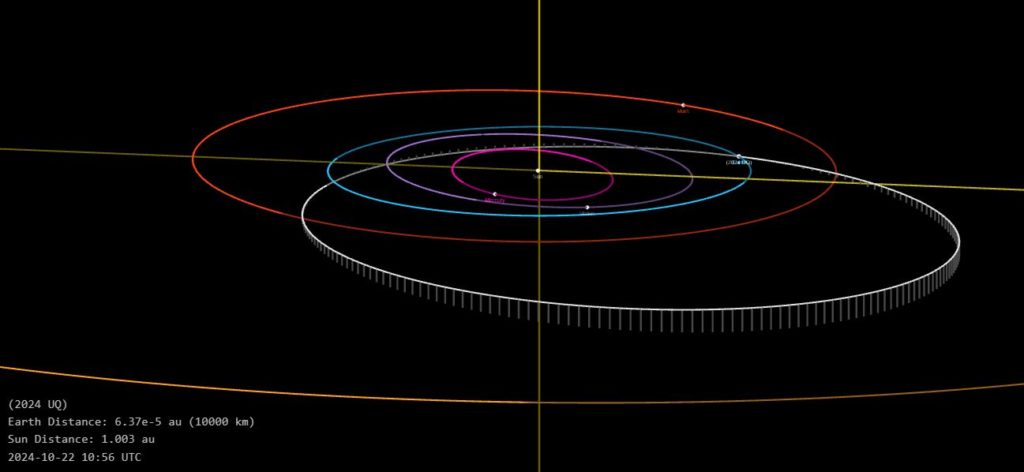This time, it did not let the time to astronomers to prepare themselves for its atmospheric entry… 2024 UQ, 10th asteroid to be discovered before it entered the atmosphere was barely observed, as it was only observed and discovered… 106 minutes before it hit the Earth atmosphere above the Pacific ocean!

A small asteroid observed once, and then precovered
When ATLAS-HKO (Asteroid Terrestrial-impact Last Alert System-Haleakalā Observatoy) asteroid monitoring program detected a small object, on October 22nd, 09h 08min UT, this was not supposed to be a very interesting asteroid. But after 6 observations made with the same 0,5 m-diameter telescope, and after being posted to NEOCP (Near Earth Object Confirmation page, by Minor Planet Center), JPL (NASA Jet Propulsion Laboratory, via Scout system) and ESA (European Space Agency, via Meerkat system) calculations showed the provisory named A11dc6D asteroid had a very likely impact trajectory with the Earth. But when the alert was issued, the small asteroid had ever entered the atmosphere of our planet. Later, precovery detections of 2024 UQ were found on Catalina Sky Survey images, but that could only confirm the position and time of impact.
Fireball just reported on CNEOS page impacting 1000 km off the coast of California today at 1054 UT. Energy of 0.15 kT corresponds roughly to a 1m diameter object. @IMOmeteors @amsmeteors
— Peter Brown (@pgbrown) October 23, 2024
2024 UQ atmopsheric entry confirmed over the Pacific ocean
As the impact area was above a low populated area over Pacific ocean, around 1 000 km West of Californian coast, and that no real alert coul be issued, the only confirmation recordings (for the moment) came from a GEOS satellite, which recorded a bright flash, and the USG, which reported both an event on October 22nd, 10h 54min 48sec UT, over the position located at coordinates lat. = 30°N ; lon. = 136°W and at a 38,2 km altitude. According to calculations by peter Brown and his team, the 0.15 kT of TNT released during the atmospheric entry confirmed the estimated 1-m diameter dimensions of Apollo-type 2024 UQ deduced from telescopic observations (which gave a 0,6-1,4 m diameter range).
Sources
- MPEC 2024-U49 : 2024 UQ
- MPML mailing list thread: (now impacted) Impactor A11dc6D



 You saw something bright and fast? Like a huge shooting star? Report it: it may be a fireball.
You saw something bright and fast? Like a huge shooting star? Report it: it may be a fireball.  You counted meteors last night? Share your results with us!
You counted meteors last night? Share your results with us!  You took a photo of a meteor or fireball? You have a screenshot of your cam? Share it with us!
You took a photo of a meteor or fireball? You have a screenshot of your cam? Share it with us!  You caught a meteor or fireball on video? Share your video with us!
You caught a meteor or fireball on video? Share your video with us!